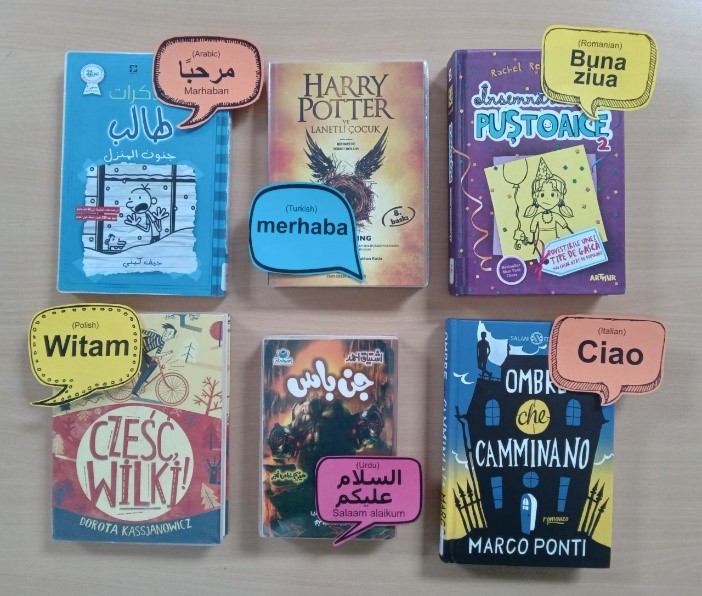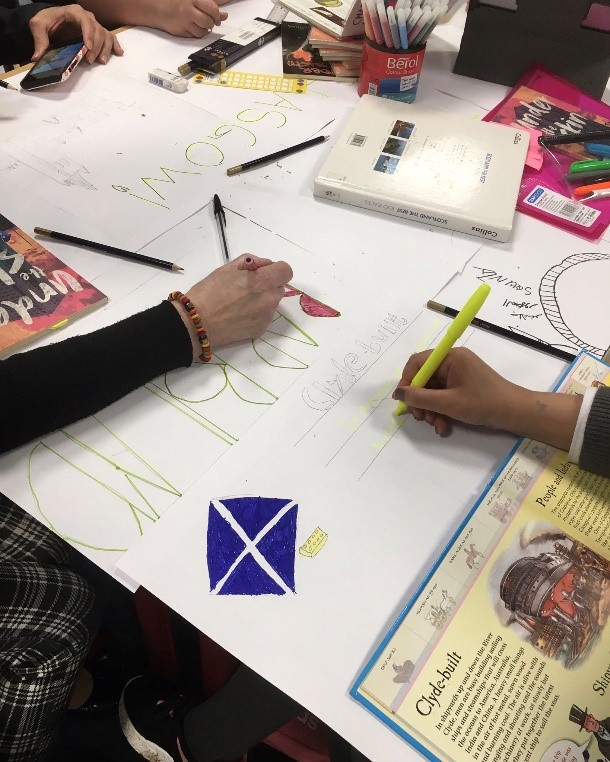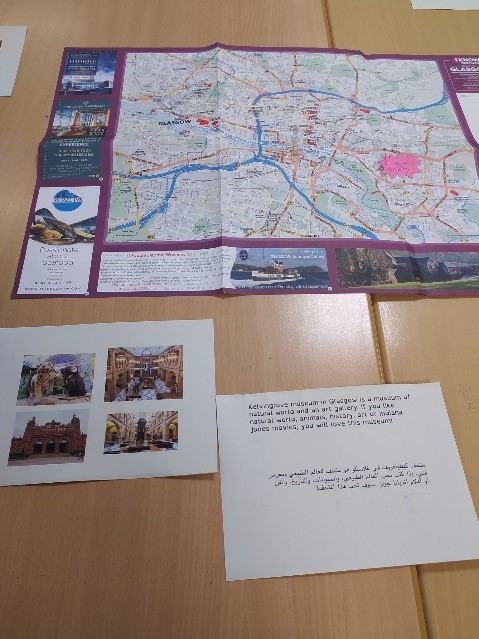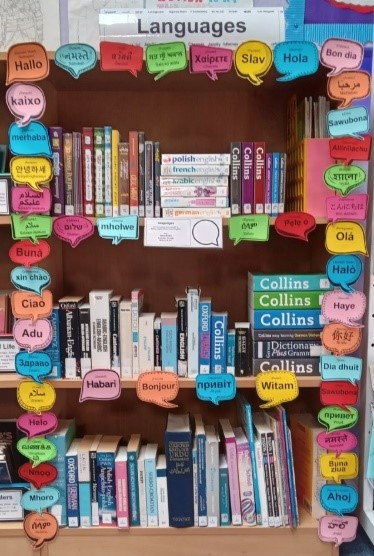Supporting EAL Pupils in the School Library
Category: Blog, Branches and Groups, Professional Development, SLG Scotland
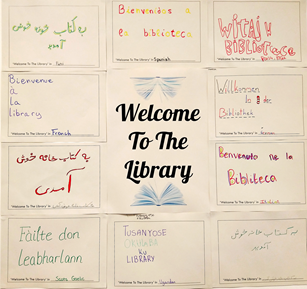
SLG Scotland regularly showcase an activity or project that furthers the strategic aims of Vibrant Libraries, Thriving Schools (VLTS): A National Strategy for School Libraries 2018 – 2023. Here, School Librarian Markie DeLeavey tells us more about how Glasgow School Libraries work with pupils who speak English as an additional language.
Name: Various Glasgow School Libraries
Title: Supporting EAL pupils in the School Library
Furthering Strategic Aims:
- Curriculum, Learner Journey and Developing the Young Workforce
- Information, Digital Literacy and Digital Creativity
- Literacy, Numeracy and Family Learning
- Health and Wellbeing
The Initiative
Glasgow School Libraries secured funding through the Scottish Government’s School Library Improvement Fund administered by SLIC, to deliver a project across ten secondary schools aimed at supporting EAL pupils in the School Library.
Partnering with each school’s EAL and Support for Learning departments, the School Librarians:
- Launched book groups
- Organised author/illustrator workshops
- Collaborated on a multilingual Glasgow Guide for New Scots from the pupils’ perspective.
The project not only focused on supporting pupils’ English language and literacy skills, but also focused on valuing multilingualism and promoting home languages within the School Library. We did this by embedding EAL-friendly best practice, informed by training sessions delivered by Multilingual Library Scotland, the Glasgow Dyslexia and EAL Unit, and the Scottish Refugee Council.
Participating pupils were identified through Support for Learning/EAL departments. While some groups were timetabled during class time, others ran during lunch breaks. A class set of books were purchased for discussion and School Librarians created their own literacy-based activities to tie in with each title. The Glasgow Guide sessions concentrated on gathering pupils’ favourite foods, places and other observations of the city. Responses have been collated by the School Librarians to help create the guide which will be submitted to a translation service and developed into an interactive, multilingual PDF to be shared with relevant school departments and new pupils.
We were also fortunate to have sessions from local authors/illustrators including Gary Chudleigh, Tawona Sithole, Neil Slorance, Victoria Williamson, and award-winning graphic novel duo, Metaphrog, who were also commissioned to design the cover of the Glasgow Guide.
Other activities included:
- Project Cinderella: pupils read a variety of Cinderella adaptations, then wrote their own versions and a play.
- Creating a whole class multilingual magazine with articles on topics of pupils’ choice.
- Visiting Kelvingrove museum: a field trip that helped practice speaking skills while exploring a famous Glasgow venue.
- Creating multilingual signage and activities.
Impact
We gauged the successes and impact of the project using a baseline survey and the Glasgow Life Evaluation Toolkit, which includes direct observation and pupil/teacher feedback. Teachers noted that the project contributed to the Curriculum for Excellence by enabling young people to be successful learners, confident individuals, and effective contributors. Pupils remarked that their literacy levels improved as a direct consequence of participating, and that they now enjoy reading outside of school. Participants also fed back that the discussion element of the reading groups helped with their self-talk. The project has developed young people’s English language skills, as many felt that it helped them understand English outside of the school environment. Pupils and teachers noted a positive impact on participants’ confidence, while improving integration and enabling young people to feel valued by having a sense of ownership over the development of their literacy. Pupils were also more aware of the stocks and services of the school library offer.
The various training sessions helped inform stock selection and highlighted simple, yet effective ways to make an inviting, multilingual-friendly School Library. Some Libraries now have multilingual posters, signage, and are developing Community Language sections in their libraries. These collections contain dictionaries and books written in different languages.
We were also able to set up procurement from a home language supplier (Books Asia) during the project, which will help us develop our Community Language collections. We’ve created a School Librarian EAL Toolkit (EAL Toolkit Contents List) containing a range of resources which were collated throughout the duration of the project. This contains best practice, guidance, activities, and preparatory material that may be useful for colleagues looking to start EAL-tailored book groups and activities.
Some of the books we used were:
- Around the World in 80 Days graphic novel adaptation by Chris Everheart, ills. Tod G Smith (Stone Arch Books)
- Mouse, Bird, Snake, Wolf by David Almond, ills. Dave McKean (Walker)
- iHero Legends: Beowulf by Steve Barlow and Steve Skidmore (Franklin Watts)
- Cinderella by Jennifer Fandell, ills. Michelle Simpson (Picture Window Books)
- Eagle Warrior by Gill Lewis (Barrington Stoke)
- Robin Hood by Karen Kovacs (Penguin Readers)
- Under the Skin by Cathy MacPhail, ills. Tom Percival (Barrington Stoke)
- YouthQuake: 50 Children and Young People who Shook the World by Tom Adams, ills. Sarah Walsh
For more information about the project, please email gw19deleaveymarkie@glow.ea.glasgow.sch.uk.
